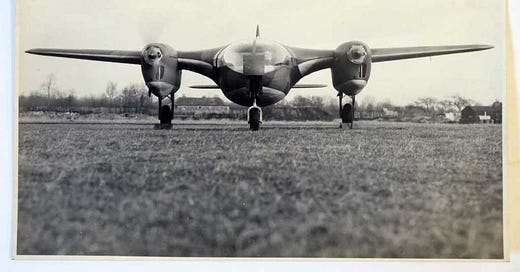Miles M.30, the British 'Moonbat' and M.20, the 1940s F-20 Tigershark
Blended-wing wonder of the 1940s and an excellent low-cost tactical fighter
There's a good reason that the 1942 Miles M.30 reminds you of the later McDonnell XP-67 'Moon Bat', as both were based based on the blended-wing body principles patented by the Russian aerodynamicist Nicolas Woyevodsky. Miles were embracing these futuristic ideas to create a radical new type of aircraft. Miles Aircraft was run by two aero engineers married to each other and was based in Berkshire in England. Maxine 'Blossom' Miles, as well as being an aviation engineer, was a socialite, and businesswoman. She became fascinated by aviation in the 1920s, and married her flight instructor, Frederick George Miles. Together they founded Miles Aircraft Ltd. The company specialised in innovative clever designs, such as the M.20.
Miles M.20 - The 'F-20 Tigershark' of the 1940s
The chunky, cheap and cheerful Miles M.20 would likely have proved a most useful aircraft in the early/mid war period.
The M.20 was a thoroughly sensible design, cleverly engineered to be easy to produce with minimal delay at its nation’s time of greatest need, whilst still capable of excellent performance. As it turned out its nation’s need never turned out to be quite great enough for the M.20 to go into production. First flying a mere 65 days after being commissioned by the Air Ministry, the M.20’s structure was of wood throughout to minimise its use of potentially scarce aluminium and the whole nose, airscrew and Merlin engine were already being produced as an all-in-one ‘power egg’ unit for the Bristol Beaufighter II.
To maintain simplicity the M.20 dispensed with a hydraulic system and as a result the landing gear was not retractable. The weight saved as a consequence allowed for a large internal fuel capacity and the unusually heavy armament of 12 machine guns with twice as much ammunition as either Hurricane or Spitfire.
Keep reading with a 7-day free trial
Subscribe to Hush-Kit Aviation Newsletter to keep reading this post and get 7 days of free access to the full post archives.





